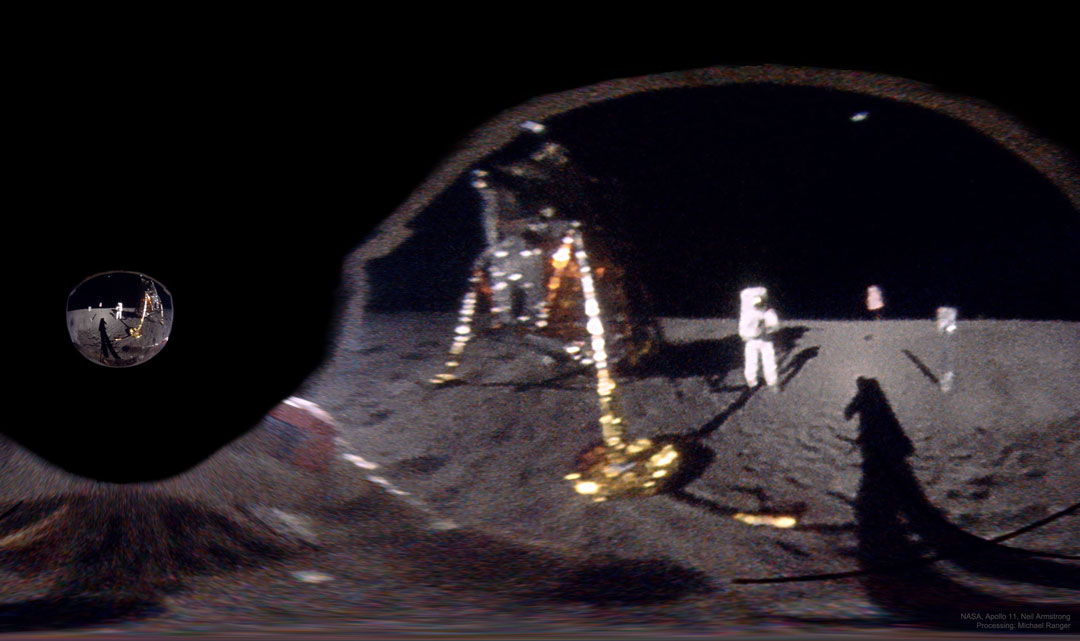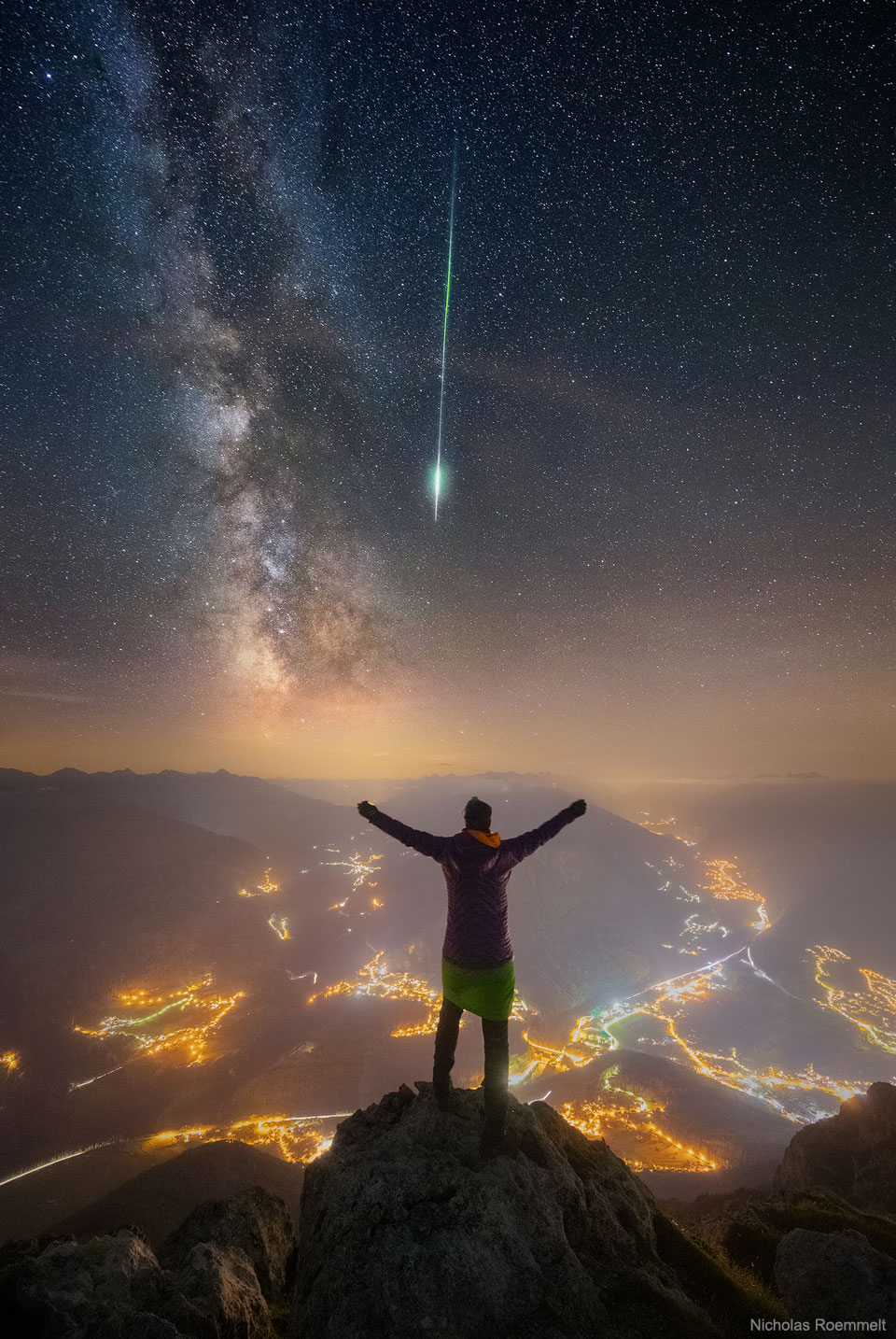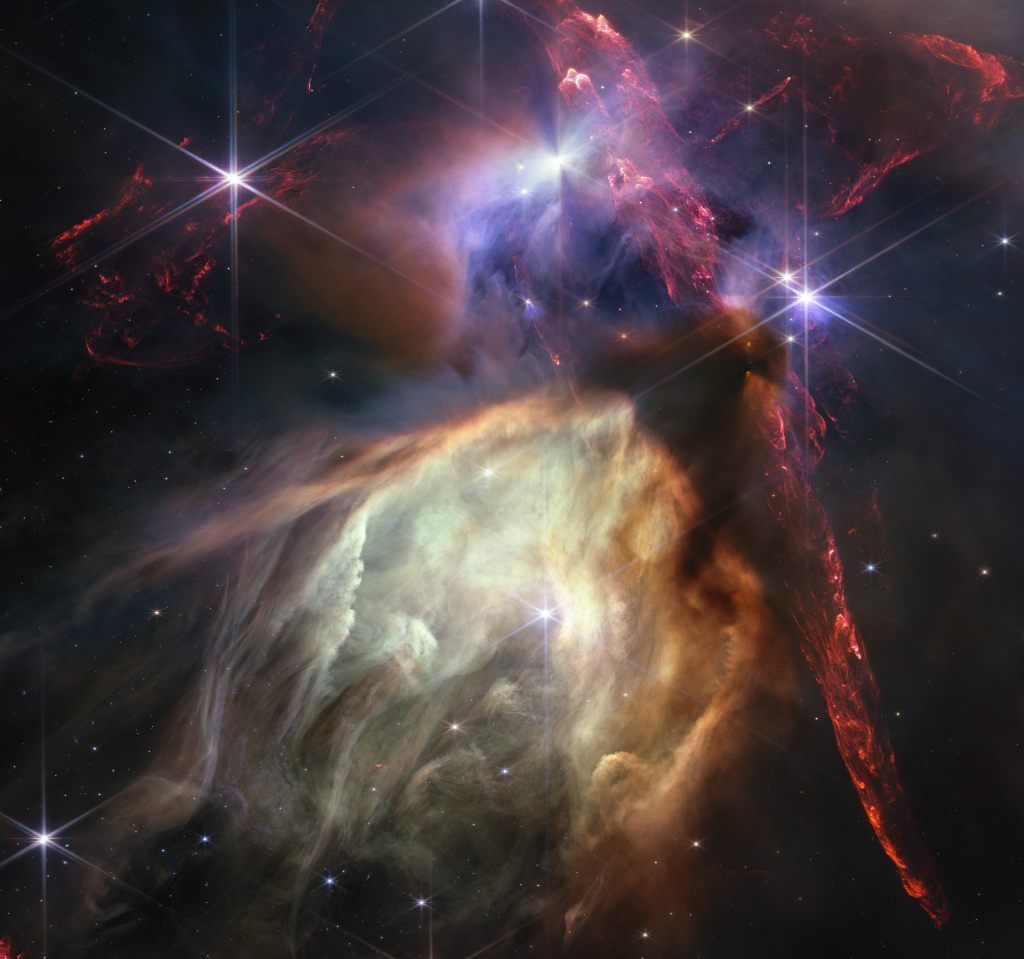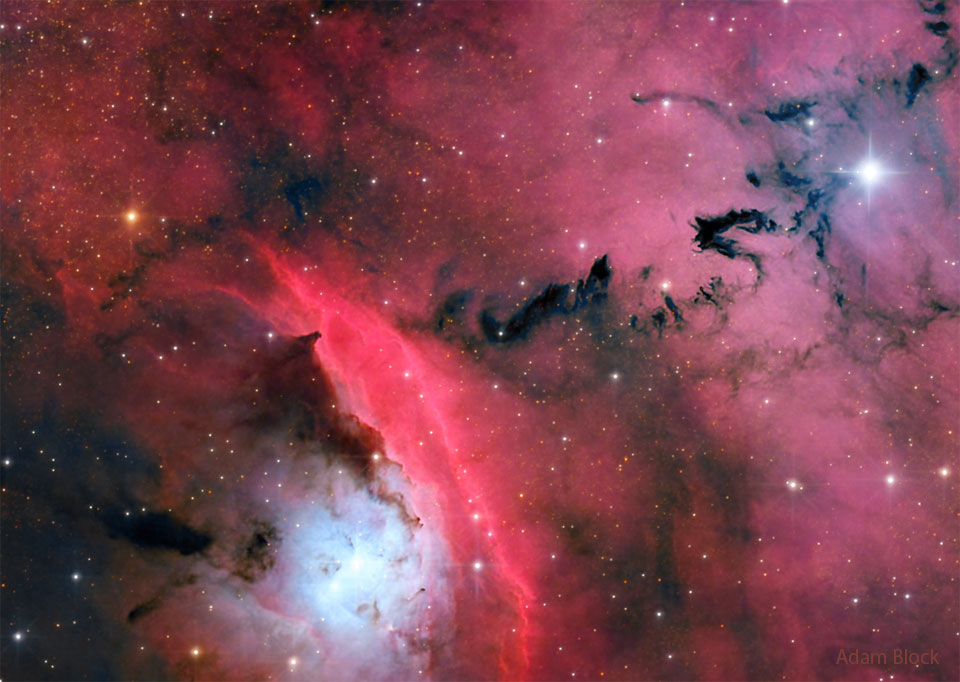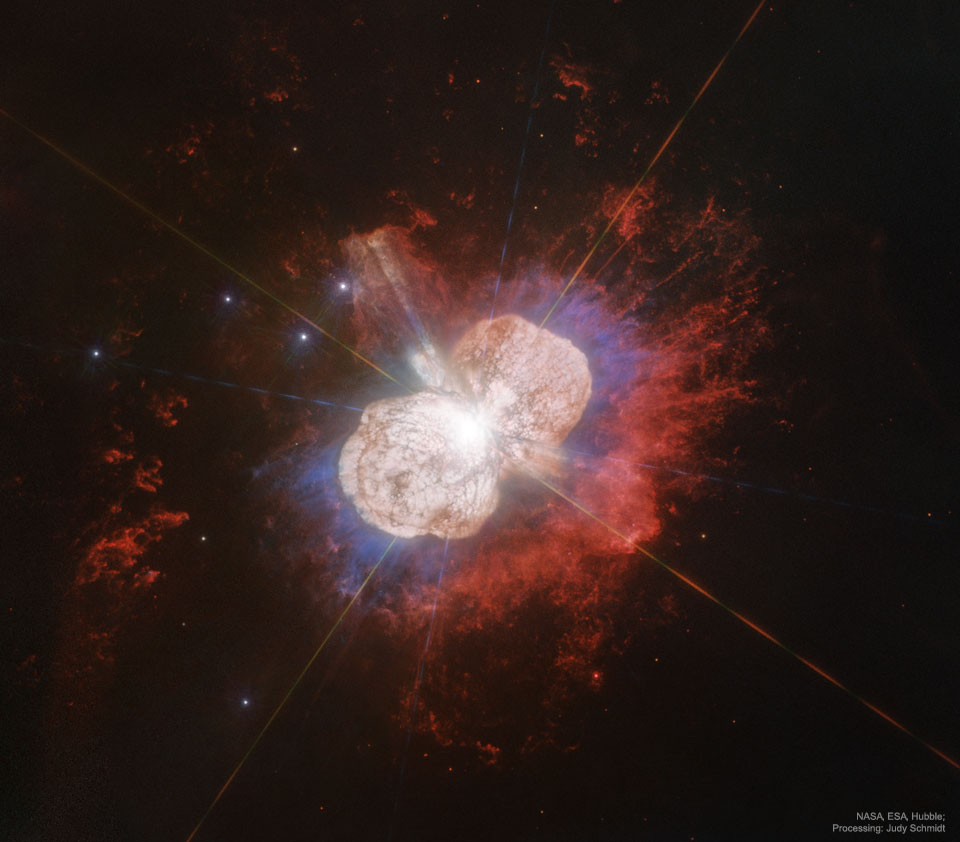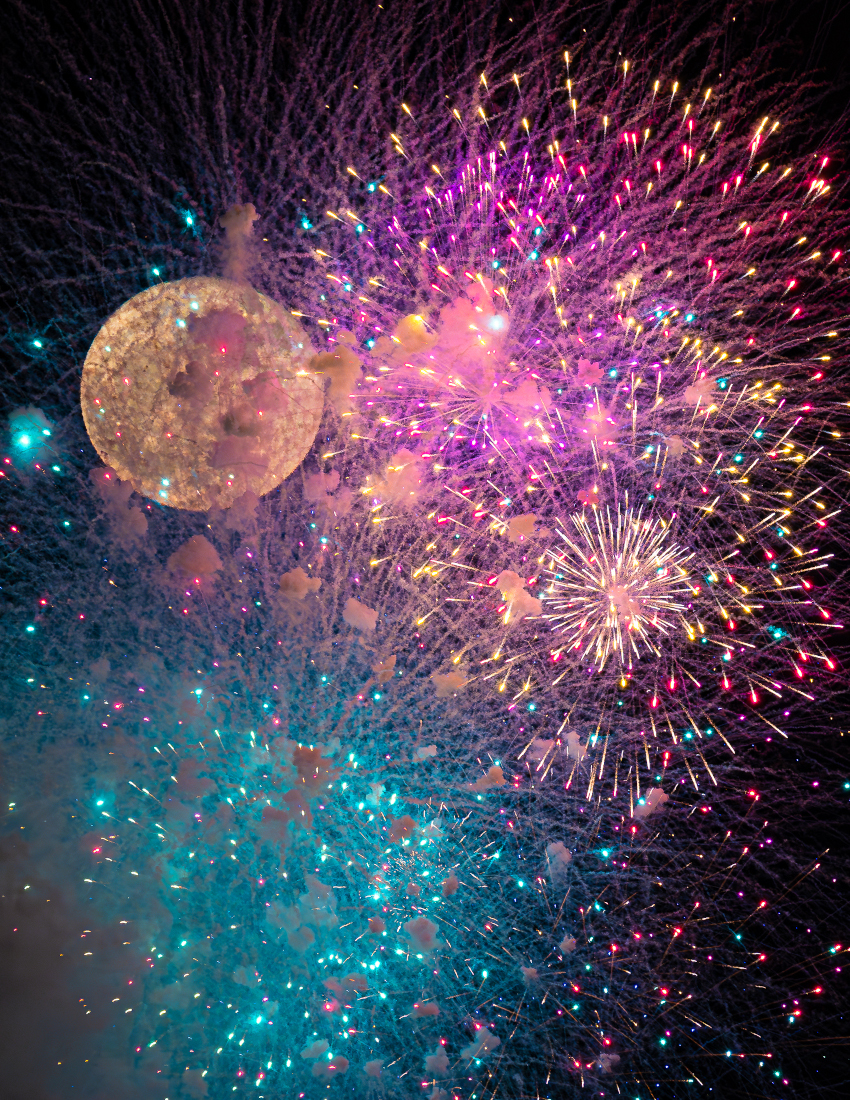Nombre total de pages vues
22/07/2023
GEMMOLOGIE - La fluorine
ART FRACTAL - Inquiétante image fractale sur fond rouge
ASTRONOMY - Apollo 11: Armstrong's Lunar Selfie
2023 July 22
Image Credit: NASA, Apollo 11, Neil Armstrong; Processing: Michael Ranger
Explanation: A photograph of Buzz Aldrin standing on the Moon taken by Neil Armstrong, was digitally reversed to create this lunar selfie. Captured in July 1969 following the Apollo 11 moon landing, Armstrong's original photograph recorded not only the magnificent desolation of an unfamiliar world, but Armstrong himself reflected in Aldrin's curved visor. In the unwrapped image, the spherical distortion of the reflection in Aldrin's helmet has been reversed. The transformed view features Armstrong himself from Aldrin's perspective. Since Armstrong took the original picture, today the image represents a fifty-four year old lunar selfie. Aldrin's visor reflection in the original image appears here on the left. Bright (but distorted) planet Earth hangs in the lunar sky above Armstrong's figure, toward the upper right. A foil-wrapped leg of the Eagle lander and Aldrin's long shadow stretching across the lunar surface are prominently visible. In 2024 NASA's Artemis II mission will return humans to the Moon.
21/07/2023
ASTRONOMY - Meteor and Milky Way over the Alps
2023 July 16
Image Credit & Copyright: Nicholas Roemmelt (Venture Photography)
Explanation: Now this was a view with a thrill. From Mount Tschirgant in the Alps, you can see not only nearby towns and distant Tyrolean peaks, but also, weather permitting, stars, nebulas, and the band of the Milky Way Galaxy. What made the arduous climb worthwhile this night, though, was another peak -- the peak of the 2018 Perseids Meteor Shower. As hoped, dispersing clouds allowed a picturesque sky-gazing session that included many faint meteors, all while a carefully positioned camera took a series of exposures. Suddenly, a thrilling meteor -- bright and colorful -- slashed down right next to the nearly vertical band of the Milky Way. As luck would have it, the camera caught it too. Therefore, a new image in the series was quickly taken with one of the sky-gazers posing on the nearby peak. Later, all of the images were digitally combined.
15/07/2023
ASTRONOMY - Webb's Rho Ophiuchi
2023 July 13
Image Credit: NASA, ESA, CSA, STScI, Klaus Pontoppidan (STScI), Processing: Alyssa Pagan (STScI)
Explanation: A mere 390 light-years away, Sun-like stars and future planetary systems are forming in the Rho Ophiuchi molecular cloud complex, the closest star-forming region to our fair planet. The James Webb Space Telescope's NIRCam peered into the nearby natal chaos to capture this infrared image at an inspiring scale. The spectacular cosmic snapshot was released to celebrate the successful first year of Webb's exploration of the Universe. The frame spans less than a light-year across the Rho Ophiuchi region and contains about 50 young stars. Brighter stars clearly sport Webb's characteristic pattern of diffraction spikes. Huge jets of shocked molecular hydrogen blasting from newborn stars are red in the image, with the large, yellowish dusty cavity carved out by the energetic young star near its center. Near some stars in the stunning image are shadows cast by their protoplanetary disks.
10/07/2023
ASTRONOMY - Stars, Dust and Nebula in NGC 6559
2023 July 10
Image Credit & Copyright: Adam Block, Telescope Live
Explanation: When stars form, pandemonium reigns. A textbook case is the star forming region NGC 6559. Visible in the featured image are red glowing emission nebulas of hydrogen, blue reflection nebulas of dust, dark absorption nebulas of dust, and the stars that formed from them. The first massive stars formed from the dense gas will emit energetic light and winds that erode, fragment, and sculpt their birthplace. And then they explode. The resulting morass can be as beautiful as it is complex. After tens of millions of years, the dust boils away, the gas gets swept away, and all that is left is a bare open cluster of stars.
09/07/2023
METEOROLOGIE - Phénomène extraordinaire : le nuage en forme de champignon atomique
ASTRONOMY - Doomed Star Eta Carinae
2023 July 9
Image Credit & Copyright: NASA, ESA, Hubble; Processing & License: Judy Schmidt
Explanation: Eta Carinae may be about to explode. But no one knows when - it may be next year, it may be one million years from now. Eta Carinae's mass - about 100 times greater than our Sun - makes it an excellent candidate for a full blown supernova. Historical records do show that about 170 years ago Eta Carinae underwent an unusual outburst that made it one of the brightest stars in the southern sky. Eta Carinae, in the Keyhole Nebula, is the only star currently thought to emit natural LASER light. This featured image brings out details in the unusual nebula that surrounds this rogue star. Diffraction spikes, caused by the telescope, are visible as bright multi-colored streaks emanating from Eta Carinae's center. Two distinct lobes of the Homunculus Nebula encompass the hot central region, while some strange radial streaks are visible in red extending toward the image right. The lobes are filled with lanes of gas and dust which absorb the blue and ultraviolet light emitted near the center. The streaks, however, remain unexplained.
06/07/2023
ASTRONOMY - Fireworks vs Supermoon
2023 July 6
Image Credit & Copyright: Michael Seeley
Explanation: On July 4, an almost Full Moon rose in planet Earth's evening skies. Also known as a Buck Moon, the full lunar phase (full on July 3 at 11:39 UTC) was near perigee, the closest point in the Moon's almost monthly orbit around planet Earth. That qualified this July's Full Moon as a supermoon, the first of four supermoons in 2023. Seen from Cocoa Beach along Florida's Space Coast on July 4, any big, bright, beautiful Full Moon would still have to compete for attention though. July's super-moonrise was captured here against a super-colorful fireworks display.
PHOTOGRAPHIE - Le monde explosif d'Alan Sailer - Au ralenti : explosion d'un litchi
ASTRONOMY - Phantoms in Cassiopeia
2024 October 26 Phantoms in Cassiopeia Image Credit & Copyright : Christophe Vergnes , Hervé Laur Explanation: These brightly outlin...
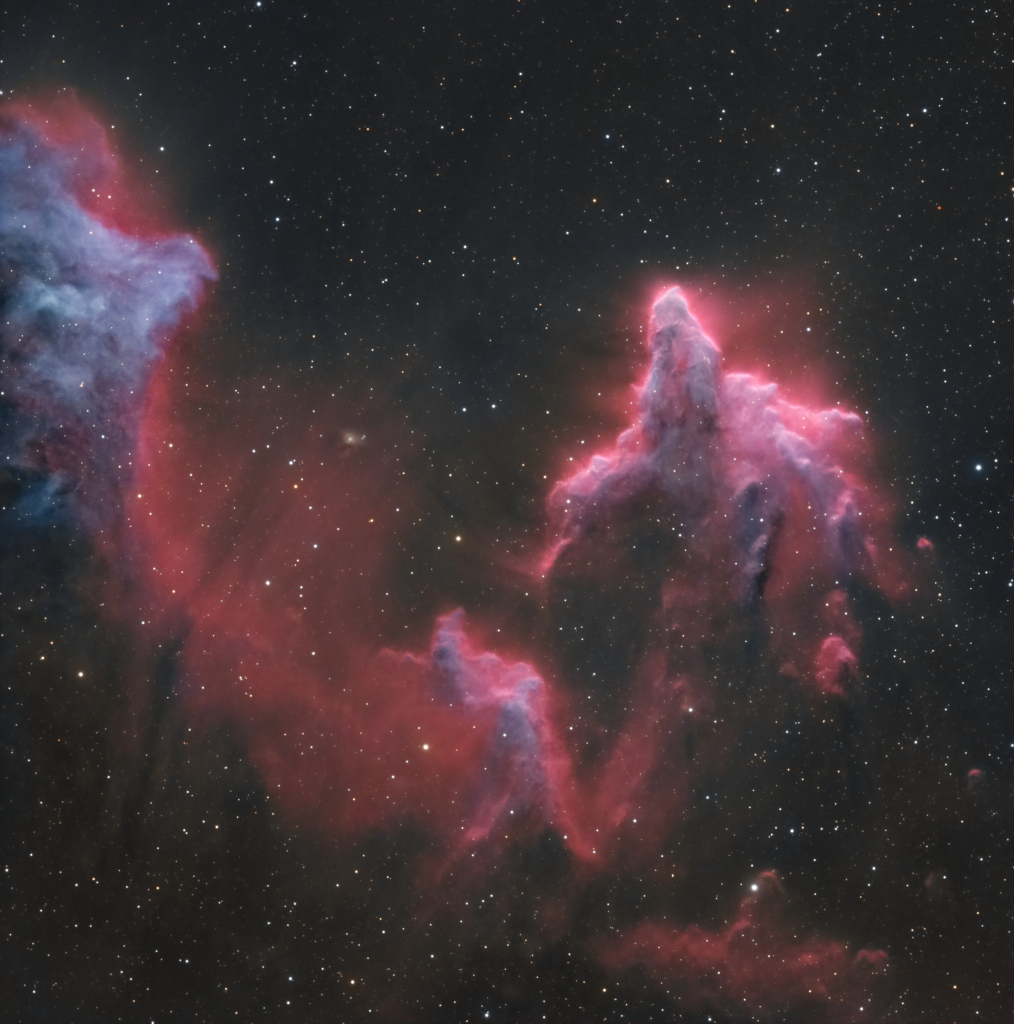
-
2022 September 26 All the Water on Planet Earth Illustration Credit: Jack Cook, Adam Nieman, Woods Hole Oceanographic Institution ; Data ...
-
2021 August 11 Mammatus Clouds over Saskatchewan Image Credit & Copyright: Michael F Johnston Explanation: When do cloud bottoms appe...


